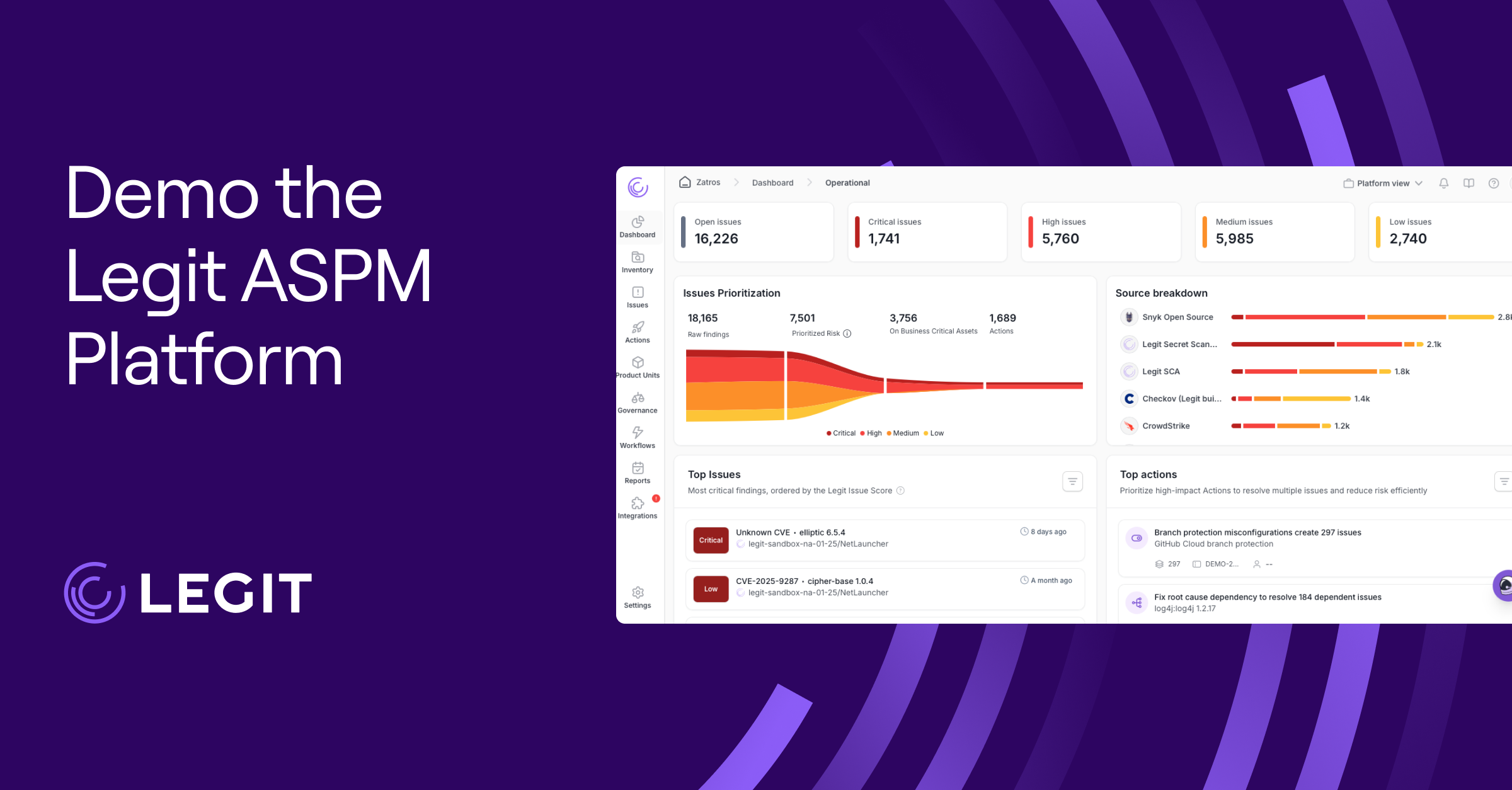Security teams regularly face an overwhelming volume of vulnerabilities—but not every risk poses an equal threat. Vulnerability prioritization cuts through the noise, guiding your team to quickly identify and tackle the most critical threats before attackers can exploit them.
With the right prioritization strategy, you avoid wasting resources on minor issues and focus instead on the ones with the most significant impact.
Here’s a guide to vulnerability prioritization, the key steps to follow, and practical strategies to enhance security posture.
What Is Vulnerability Prioritization?
Vulnerability prioritization involves assessing and classifying security vulnerabilities based on the actual risks they pose. This lets security teams tackle the most significant threats first.
The huge number of threats out there makes vulnerability management prioritization essential. But realistically, your team can’t immediately address every single issue. Prioritization effectively focuses your resources by evaluating factors like exploitability, business impact, and asset criticality. For instance, a severe vulnerability on a non-critical system might warrant less urgency than a moderate one that attackers can actively exploit on a vital business application.
By incorporating threat intelligence and considering real-world scenarios, your vulnerability remediation prioritization targets actual threats instead of speculative risks. This streamlines your cybersecurity efforts, allowing you to allocate resources with the most significant impact and strengthen your security posture.
7 Steps for Vulnerability Prioritization
Before you can fix the right vulnerabilities, you need a clear plan to sort them. Prioritization works best when it follows a structured process. Here’s how to do it:
1. Identification and Inventory
Start with a comprehensive vulnerability assessment to identify and catalog every asset in your environment. Incorporating vulnerability prioritization technology, such as scanning tools, helps create a detailed inventory of your assets and associated risks.
Modern vulnerability scanners can detect misconfigurations, outdated components, and common exposures across cloud and on-prem environments. This makes sure no significant resource or vulnerability slips through unnoticed, providing a solid basis for your prioritization process. It also supports broader vulnerability management initiatives by giving your team clear visibility across all systems, from on-prem environments to cloud platforms.
2. Contextual Risk Assessment and Categorization
Perform a contextual assessment to categorize identified vulnerabilities. While the Common Vulnerability Scoring System (CVSS) scores offer a helpful initial reference, your team should consider additional details such as asset criticality and potential disruptions. Understanding whether an issue is an application vulnerability, part of a software supply chain vulnerability, or related to misconfigurations informs the issue’s ranking.
This leads to a more accurate vulnerability risk prioritization, ensuring those impacting core business functions or compliance obligations rise appropriately in priority.
3. Prioritization Based on Exploitability and Impact
Once categorized, prioritize based on exploitability and real-world impact. Adopting an attack-based vulnerability prioritization strategy helps your team focus on those actively exploited by threat actors.
Use intelligence resources such as CISA’s Known Exploited Vulnerabilities Catalog (KEV) to identify and urgently address these active threats, including zero-day vulnerabilities requiring immediate attention due to their lack of available patches.
4. Remediation Planning and Implementation
Next, outline a clear remediation plan. Document the steps to address each issue, including patches, configuration adjustments, or compensating controls. Engage directly with DevOps and security teams, integrating these steps into existing workflows to facilitate efficient remediation.
Your team should outline who's responsible, when they’ll address the issue, and how they'll carry out remediation without disrupting key operations. Integrate remediation tasks into existing ticketing systems to ensure clear ownership and trackable progress across teams.
5. Validation and Continuous Monitoring
Remediation doesn’t end after patch deployment. Continuously validate and monitor the effectiveness of implemented fixes. Regularly run scans and validation tests to confirm that you’ve resolved vulnerabilities and that none have resurfaced due to regressions or configuration drift.
Continuous monitoring immediately alerts your team to new vulnerabilities or attempted exploitations, especially for identifying new cloud vulnerabilities or unpatched supply chain risks.
6. Communication and Reporting
Report consistently to stakeholders on prioritization, remediation, and overall risk. Effective reporting maintains transparency and helps leadership understand the ongoing impact of prioritized remediation efforts on your security posture.
7. Regular Reviews and Adjustments
Finally, regularly revisit your prioritization framework. Threat landscapes evolve, business goals shift, and regulatory demands change. Use insights from monitoring and incidents to adjust prioritization criteria, ensuring ongoing alignment with your current business and security objectives.
Vulnerability Prioritization Strategies
Not every vulnerability poses the same risk, and not every organization faces the same threats. Effective prioritization requires the right strategies that reflect your assets, operations, and risk appetite.
Below are six practical methods your team can use to rank vulnerabilities with greater clarity and confidence:
1. Risk-Based Prioritization
This strategy weighs the potential consequences of a vulnerability against the likelihood of exploitation. Prioritizing based on risk—which includes operational, financial, and reputational impacts—helps teams allocate resources to where a breach would hurt the most.
You can use tools like CVSS to support this strategy, but pair them with organizational context to guide decisions. It's a core part of many vulnerability management best practices, especially for large or highly regulated teams.
2. Prioritization According to Business Context
Not every asset is equally valuable. A moderate vulnerability on a mission-critical service might matter more than a critical one on a dormant server.
Business context prioritization focuses on asset importance, service availability, regulatory impact, and operational dependencies. This aligns remediation with what keeps your business running.
3. Threat Intelligence
Real-time threat intelligence brings external insight into internal risk decisions. This method relies on data from known exploits, attack campaigns, and global vulnerability databases like the CISA KEV catalog. It’s especially effective for surfacing high-risk vulnerabilities already used in the wild, including those that might otherwise seem lower priority on paper.
4. Exploit Prediction Scoring System
Based on real-world threat data, the exploit prediction scoring system (EPSS) estimates the probability that an attacker could exploit a vulnerability within the next 30 days. While CVSS scores provide a snapshot of severity, EPSS forecasts potential attacker behavior. When used together, they help you separate hypothetical risks from probable ones.
5. Environmental and Compliance-Based Prioritization
Specific environments require faster remediation due to regulatory or exposure risks. Vulnerabilities in public cloud resources, financial systems, or healthcare workloads often receive higher priority due to compliance obligations or external access. Frameworks like NIST 8286B suggest using risk criteria tied to legal, operational, and organizational goals to support consistent, context-driven decisions.
6. Software Supply Chain Awareness
Applications rely on interconnected services, third-party libraries, and shared infrastructure. By prioritizing based on software supply chain exposure, your team can address vulnerable components, like a popular open-source package or a misconfigured CI/CD integration, before they impact multiple systems.
This is especially important for teams managing distributed development environments and ties directly into the broader vulnerability management lifecycle your program should follow.
Importance of Vulnerability Prioritization
When everything seems urgent, it’s easy to lose sight of true risk. A steady stream of vulnerability alerts can overwhelm even the most experienced security teams—especially when threat volume outpaces capacity.
Prioritization allows you to cut through that noise and take decisive action on the vulnerabilities most likely to impact your business. It’s how you avoid spending hours patching low-risk issues while a high-risk exploit slips through the cracks.
But prioritization is more than just a filter. It’s the control panel for effective vulnerability management. It gives you the insight to allocate resources where they’ll do the most good—protecting customer data, maintaining service uptime, and staying compliant. With the correct risk-scoring methods, your team can act quickly on what matters and avoid drowning in noise.
The Challenges of Vulnerability Prioritization
Getting vulnerability prioritization right sounds simple, but it’s anything but in practice. One of the most common struggles is visibility. Many organizations don’t have a complete view of their assets, especially when dealing with legacy systems, third-party dependencies, and constantly changing cloud environments. Even after identifying vulnerabilities, your team may struggle to determine which ones carry real business risk without strong context around asset value and operational impact.
Then, there’s volume. Vendors disclose thousands of new vulnerabilities each year, and security teams often juggle those alongside other priorities with limited staff. Automated tools help, but they still need tuning—and even then, false positives, incomplete data, and poorly aligned scoring models can slow things down.
Teams also face operational barriers, like coordinating across departments or applying patches in environments that can't afford downtime. They need a security system that scans for vulnerabilities without the hassle.
Vulnerability Prioritization With Legit Security
Legit Security automates vulnerability prioritization by continuously analyzing code, pipelines, and development infrastructure throughout the SDLC. It correlates security findings with real-time context—like asset criticality, exploitability, and business impact—to pinpoint the vulnerabilities attackers are most likely to exploit. This system lets security and development teams focus on the issues that matter most, rather than sifting through noise.
Legit Security’s platform integrates seamlessly into existing workflows, provides clear, actionable remediation guidance, and helps your team address high-risk gaps before they reach production. Request a demo to learn more.
Download our new whitepaper.


